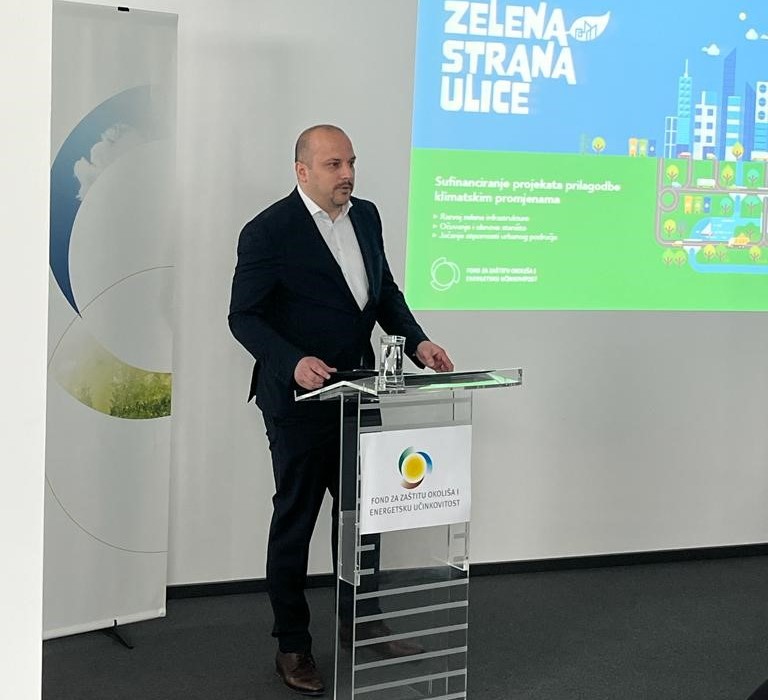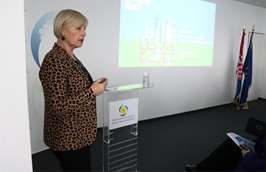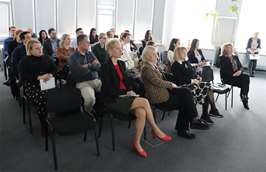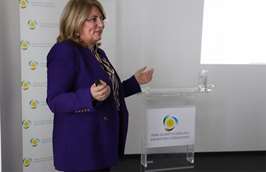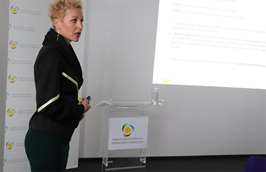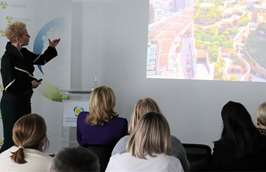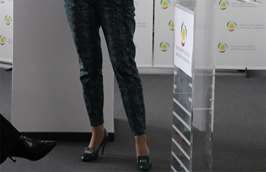02.03.2023.
The Environmental Protection and Energy Efficiency Fund held two information workshops aimed at beneficiaries of the funds and other local units interested in the Green Infrastructure projects. Last year was the first-time launch of the public call for co-financing climate change adaptation projects. Funds were approved for 46 projects worth more than EUR 15 million.“The Fund earmarked EUR 11 million for these projects that represent, in fact, investment in the future of our environment and towns, which will most certainly face challenges due to the global temperature increase. This is the main goal of the Fund’s programmes, because only through a considerable reduction of CO2 emission can we curb this growth. Waste management and energy efficiency projects have the same goal, and it is important to try and achieve it through different activities with joint forces,” said Luka Balen, the director of the Fund, announcing that the Fund had planned significant resources for co-financing these activities during 2023.
“Nowadays, we don’t talk about climate change anymore, we’re talking about the climate crisis,” warned in her presentation Nirvana Franković Mihelj, PhD. She pointed out that the changes in the main climate indicators in the past were much slower, while now they were noticeable year-on-year. “While monitoring so far focused mainly on CO2 emissions resulting from different activities, today we monitor sinks, or the potential of different types of land areas to absorb greenhouse gases. That’s why green areas are of the utmost importance, and development of the green infrastructure is essential in our climate change adaptation efforts,” explained Franković Mihelj.
In her presentation, Aleksandra Čilić, the head of the Environmental Protection Sector at the Fund, pointed out that Croatia was very susceptible to climate change, which was all the more reason for strengthening the resilience of the Croatian regions. “Interest in the Fund’s call was excellent, and I believe these projects are an indication of a different concept of urban development, which we called “The green side of the street”. Co-financing was granted for greening of roofs of public transport stops, planting tree saplings, greening of public parking lots and parks, walking paths, public drinking fountains, experience exchange and education projects. Next year, we will continue with these co-financing schemes, and we’re hoping last year’s examples will inspire others to take action,” concluded Čilić.
The best practice examples were presented by Ivana Jonke, project manager at the Environmental Protection Sector. “Almost 60% of Croatian people live in towns, and 25% in the four largest cities, meaning that encouraging “green activities” in urban areas is very important. These projects contribute to not only climate change adaptation, they also improve air quality, increase biodiversity, reduce noise levels, and in general improve the quality of citizens’ lives,” said Jonke, showing the most famous international examples of green infrastructure in Madrid, Utrecht, Milan, Melbourne, Japan, and especially attractive water reservoirs in Singapore. There are also some excellent projects that were granted resources by the Fund. After they are realised, they will be the best role model for other towns and municipalities to invest in the green infrastructure. The representatives of local units had the opportunity to exchange their ideas and experiences with other participants in the workshop regarding their planning of “green” projects so they could motivate their counterparts to consider similar projects.
“Good communication is key in raising citizens’ and the town authorities’ awareness of the need to plan ways to increase resilience of their communities and buildings,” explained Lidija Tošić, the head of the Public relations department at the Fund. “When we develop our communication plan, it is important to bear in mind that a change in behaviour for different target groups will be motivated by different things. This means it is very important to precisely define the messages we want to convey and to whom, so that we could find the best method to make sure these messages reach their target audience,” suggested Tošić. She highlighted the results of the survey of the Institute for Social Research showing that the young really were worried about climate change, and they wanted to actively participate in resolving one of the greatest challenges faced by their generation.


